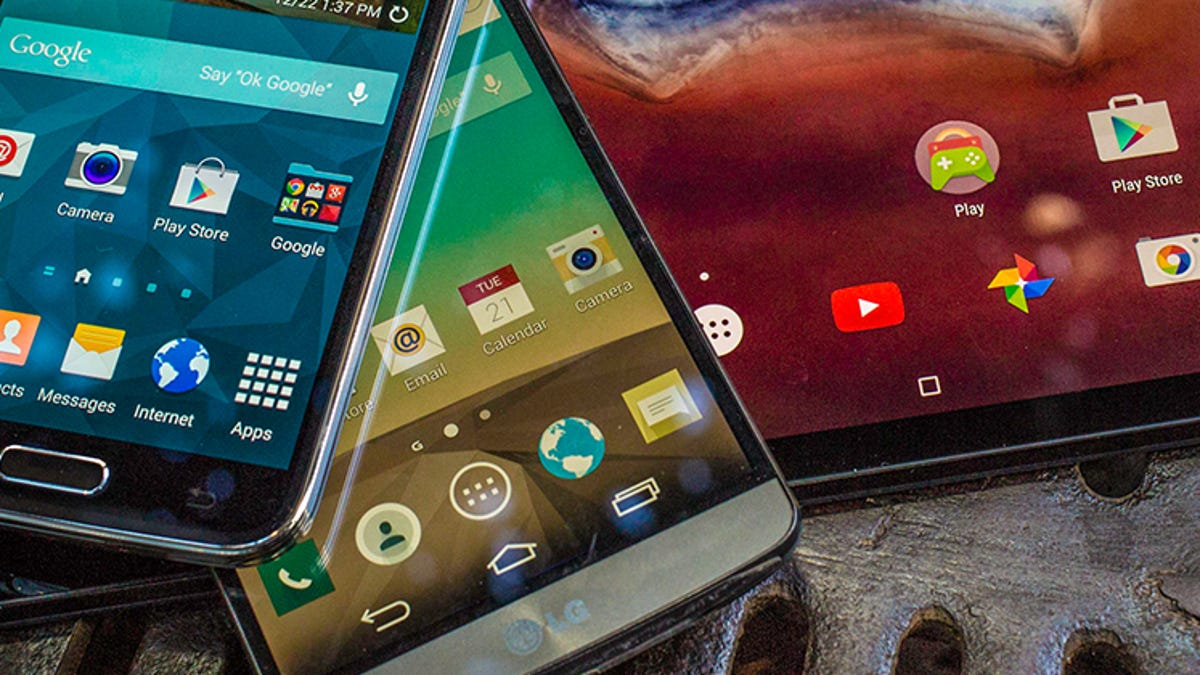 Why You Can Trust CNET
Why You Can Trust CNET Use external storage to expand unexpandable Android phones
If your phone lacks a microSD slot, you can still add extra storage. Here's how.

Android phones have always had one big advantage over iPhones: expandable storage. Unfortunately, not all Android phones have a microSD expansion slot, which makes that advantage a lot tougher to leverage.
Does that mean owners of slotless Android phones -- like, say, the Samsung Galaxy S6 -- are stuck with a fixed amount of internal space?
Thankfully, no. There are two easy and effective ways to add more storage to an "unexpandable" Android phone: a plug-in drive and a wireless drive.
The key thing to remember is that because these drives aren't connected to your phone full-time (in the way a microSD card is always plugged in), they're not intended for app storage.
Rather, external drives serve primarily to provide extra space for media: music, photos, videos, documents and the like. (Note, however, that DRM-protected media, such as movies purchased from Google Play, typically won't work when relocated to external storage.) Let's take a look at the two options and their advantages and disadvantages.
Plug and play
An OTG-compatible cable like this lets you plug any full-size flash drive into an Android phone with a USB-C port. Similar adapters are available for phones with Micro-USB ports.
Thanks to a specification called USB On-the-Go (OTG for short), you can add more storage just by plugging in a flash drive. Well, OK, there's a little more to it than that.
First, you need to make sure your phone supports the spec. The easiest way to do that is by installing one of the many "OTG checker" apps available in the Play store. I used USB OTG Checker Compatibility (free) to test a Galaxy S6; in an instant the app confirmed that the phone is OTG-ready. Your mileage may vary, what with so many different versions of Android and so many different phone models. When in doubt, you can always check with the manufacturer.
With that hurdle overcome, now you need a drive. Obviously a full-size USB flash drive can't plug into a Micro-USB or USB-C port, but there are adapters. Just hit up your preferred electronics source (I checked both Amazon and Ebay and found lots of choices) and search for "USB OTG adapter." Prices range from $2-8; there's definitely no need to pay more.
Drives like this one can plug directly into your OTG-compatible phone to provide lots of extra storage.
Another option: Buy a USB OTG-compatible flash drive, one that has a full-size (Type-A) connector at one end (for plugging into your PC) and a Micro-USB or Type-C connector at the other.
For example, the SanDisk Ultra Dual Drive (around $35 from Amazon) packs an impressive 128GB into a dongle that's barely over an inch long. It's Type-A USB 3.0 at one end and Micro-USB at the other.
However you make the connection, you can offload space-consuming media from your phone to the drive, or use your computer to fill the drive music, videos, photos and so on.
The big disadvantage here, of course, is that you have to leave a drive sticking out your phone. That's no big deal if you're simply offloading some media to free up space, but less desirable if you want to, say, watch a movie stored on the drive. Or share the drive with another user. That's why I'm a little more partial to the next option.
Cut the cord
The RAVPower FileHub Plus is not just a wireless media hub, but also a travel router and mobile charger.
Don't want a USB drive sticking out of your phone all the time? No worries: There's a wireless alternative. Wireless media drives (aka hubs) deliver the same core functionality -- extra storage for your media -- but without a physical connection.
In fact, for about the same price as the aforementioned SanDisk Dual Drive, you can get the 64GB SanDisk Connect Wireless Stick (currently $38.98 at Amazon) or RavPower FileHub Plus (around $40).
The latter is cool because it's also a travel router and mobile charger. But it's up to you to supply the storage: a USB drive or SD card. The FileHub is also bigger, bulkier and heavier than a flash drive alone -- though still very easy to fit in a pocket.
As for the SanDisk Connect, it's barely larger than a typical flash drive. And it can plug directly into a PC to suck up the media you want to share.
In addition to the obvious advantage of offering a wireless connection to your phone, these hubs can stream to multiple devices simultaneously: five for the FileHub, three for the Connect.
Downsides? Because these run on rechargeable batteries, it's one more thing to keep charged -- and if the hub runs out of juice, now you can't stream your movies. Also, a wireless drive will almost always shoehorn you into the manufacturer's file-management app, while a plug-in one may have more versatility to work with stock Android apps.
If you've tried one or both of these solutions, hit the comments and share your thoughts and recommendations!
Editors' note: This article was originally published on October 10, 2013, and has since been updated.

